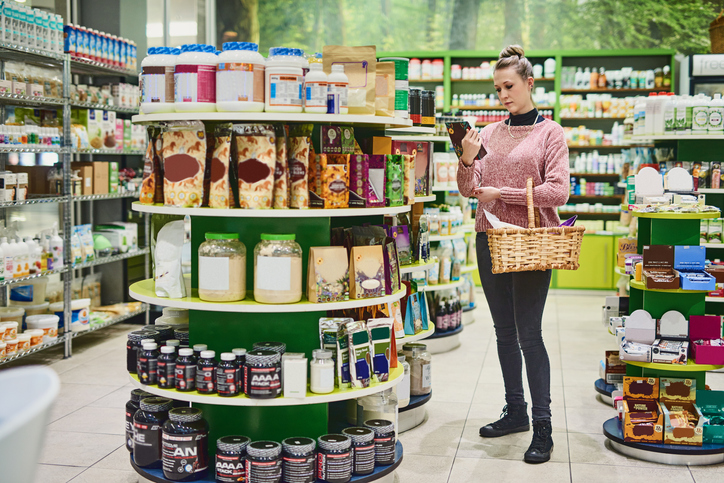Health and wellness products
Editor’s note: Jeremy King is CEO of consumer research platform Attest.
Making good choices when shopping for food and drink is a challenging task for Americans. The sheer range of products available can be overwhelming. Advertising is everywhere – we're bombarded with information, much of it confusing and contradictory. It's little wonder that as a nation we still consume so much food with high levels of sugar, fat and salt.
That isn't to say that Americans are unconcerned about making healthy choices when they purchase food and beverages. In fact, there is plenty of evidence to suggest that the nation's consumers are very interested in health and wellness products in this category. The problem, however, is that many of them are unable to identify which ones are the best options – and which ones they should avoid.
Consumer confusion leads to mistrust
Research conducted in February 2022 uncovered widespread confusion around labeling and the food and beverage category. Two thousand consumers were shown six varieties of cereal bars and asked to identify which was the healthiest choice. Just 9% of respondents selected the correct bar – and 13% selected the worst of the bunch. Misleading messaging was largely responsible for incorrect choices, with phrases such as “whole grains,” “naturally flavored” and “100 calories" misinterpreted by a significant number of participants.
With Congress planning to introduce the Food Labeling Modernization Act, which will require a standard front-of-package labeling system for all FDA-regulated food products, making good choices will hopefully become easier for Americans. But while the changes proposed by the bill are chiefly focused on improving the health of the nation, there is also much to learn for marketers about the effect that clear labeling has on consumer trust.
There is currently a widespread distrust of nutrition information presented on food packaging among Americans, even when it comes to products that fall into the health and wellness category. Just under half (46%) said they worry that wellness products aren’t actually healthy, while 41% said they were concerned that the health benefits of ingredients hadn’t been scientifically proven. Around a third (32%) questioned whether the amount of active ingredients included were enough to make a difference.
How marketers can rebuild trust
While food and beverage brands should be paying close attention to what's happening in Congress, they will be encouraged by the fact that 60% of consumers said they are looking out for health and wellness products when they shop, with 28% prepared to pay a significant premium for these items.
But if shoppers are going to be persuaded to part with their hard-earned dollars, brands operating in this sector need to think about how they can re-establish trust with target consumers. According to our research, consumers cite packaging as the top area brands should focus on if they want to increase purchase intent. In fact, putting clear nutrition labeling on the package was rated as the number one thing that brands can do to increase trust in their products.
Another consideration when it comes to packaging is the use of certification logos. Just under a quarter of those surveyed said this would boost their trust in a product, while other types of endorsement are important too. Health professionals and organizations were seen as the most trusted source of information about health-boosting foods, with 34% wanting to see endorsements from these sources.
Money-off coupons look to be a highly effective strategy for persuading shoppers to try a wellness product for the first time. One in five respondents said that being able to try a product at a discounted price is one of the top three things that would increase their trust. Understandably, many consumers expressed concerns that they may find the flavor of wellness food and beverage products unpalatable post-purchase. In fact, 42% said this was on their mind, so promotions that involve providing samples could be a good way forward – 26% of participants said that this would appeal to them.
Health and wellness trends for brands to watch in 2022
Marketers need to be aware of the ingredients Americans crave in wellness food products, as well as the kind of health benefits they are looking for. The research found protein was the component with the most pulling power, with 65% selecting protein-filled products, 39% prebiotics and probiotics and 35% Omega-3.
Nearly half of respondents wanted food to offer them better overall health and wellbeing. Better immune health was the second most sought after health benefit from food products at 44%, followed by better digestive health in third place (39%). In terms of the types of products consumers most want to be fortified with wellness ingredients, soups and smoothies came top (37%); cereals and cereal bars second (35%); and dairy products third (30%).
It's clear that Americans do not place much confidence in food and beverage brands to provide them with the information they need to make healthy choices. Brands that make packaging more consumer-friendly – with clear nutrition labeling – will go a long way in rebuilding that trust, as well as complying with changes in legislation. Marketers also need to be sensitive to the health benefits that shoppers are looking for and how they can add validity to packaging through endorsements and certification. Overall, the best approach is based on honesty – brands that try to mislead consumers will struggle to regain trust and risk falling out of favor.
